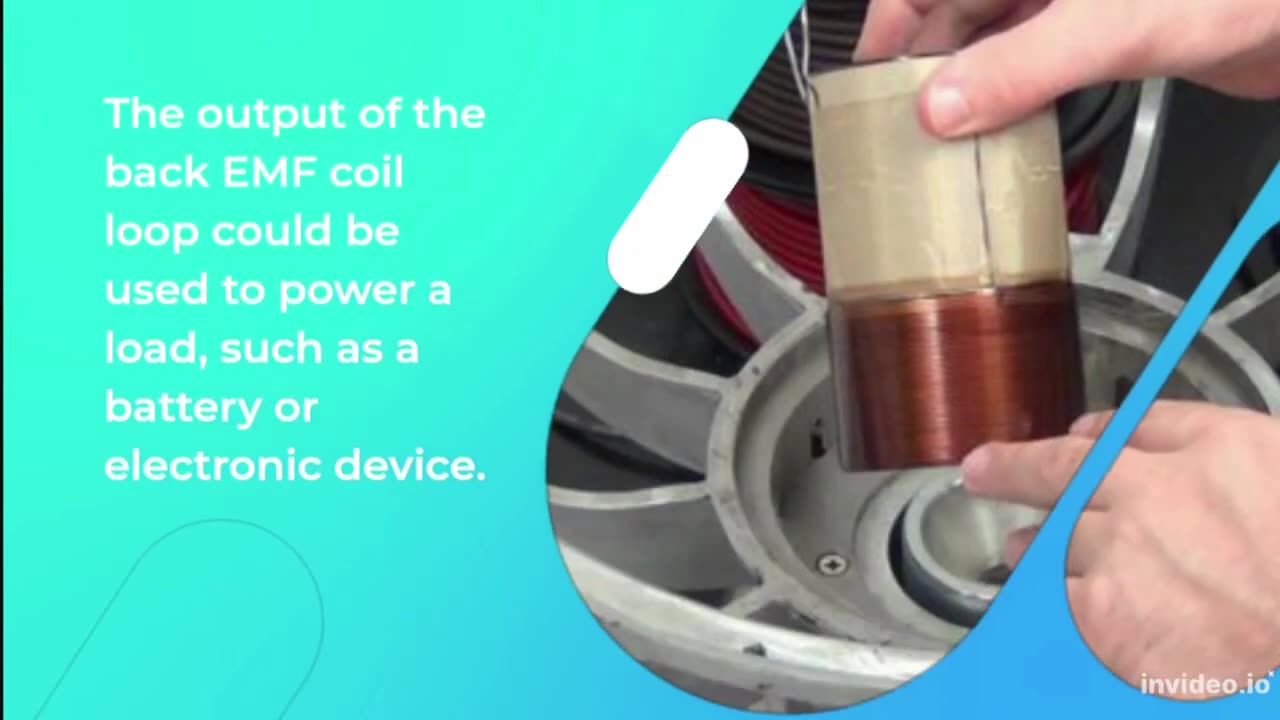Premium Only Content

Self Sustaining Acousto Electric Generator
Here's an overview of how such a system could work:
A piezoelectric material is placed inside an audio chamber or resonator, which is designed to amplify and sustain a specific frequency of sound wave. The size and shape of the chamber, as well as the material properties of the piezoelectric material, would be carefully chosen to maximize the acoustoelectric effect.
The electrical signal generated by the piezoelectric material is then used to trigger a back EMF coil loop,The feedback loop created by the back EMF coil loop will help sustain the sound wave within the chamber, and thus the acoustoelectric effect.
the system is first triggered by an external force, like a tap on the audio chamber or a burst of sound. This causes the audio chamber to resonate and the piezoelectric material to vibrate, generating a voltage spike that is fed into one of the coils (let's call it the "trigger coil") of the back EMF loop. The back EMF loop consists of two speaker coils, which are also used as part of the audio feedback loop. As the back EMF loop generates a voltage spike, it causes the speaker coils to vibrate, which in turn keeps the audio feedback amplitude strong in the audio chamber, sustaining the vibrations of the piezoelectric material.
The audio tone generated by the speaker is then fed back into the audio chamber, where it reinforces the original trigger, causing the speaker to continue vibrating and generating a sustained feedback loop. This sustained feedback loop keeps the back EMF and audio tone going, allowing the system to continue generating electricity.
So in summary, the speaker has two jobs in this system: (1) to generate the initial voltage spike and (2) to vibrate and generate an audio tone that sustains the feedback loop. By using the speaker in this way, we can create a self-sustaining system that generates electricity without the need for an external power source.
The sustained sound wave within the chamber will continue to cause the piezoelectric material to vibrate and generate electrical signals, which can be used as triggers for the back EMF coil loop. As long as the feedback loop is maintained, the system should be able to sustain itself without any external power input.
The output of the back EMF coil loop could be used to power a load, such as a battery or electronic device.
Overall, the key to making this system work would be careful design and optimization of the audio chamber, the piezoelectric material, and the back EMF coil loop. The system would also need to be carefully tuned to the resonant frequency of the audio chamber to maximize the acoustoelectric effect. The audio chamber needs to be designed to resonate at the same frequency as the speaker coils' optimal frequency, which is also the frequency of the audio tone that triggers the back EMF loop. This resonance will amplify the audio tone and maintain the feedback loop, which allows for the back EMF to bounce back and forth between the coils and generate power that can be tapped into. The resonance can be controlled and maintained by adjusting the size and shape of the audio chamber and the frequency of the audio tone.
One advantage of this approach is that it doesn't require any external power source or battery, making it self-sustaining. Another advantage is that it could potentially be made from low-cost materials, such as piezoelectric ceramics and simple audio speakers.
Forum:
http://typeright.social/forum
Please Help Support My Research: https://youtu.be/pYXETBB40j0
-
 17:59
17:59
Joel Lagace
8 months ago $0.13 earnedModern Moray Generator
2565 -
 1:00:12
1:00:12
The Tom Renz Show
16 hours agoComing to America & Coming to Christ
7.37K -
 1:12:21
1:12:21
TheRyanMcMillanShow
21 hours agoDebbie Lee: Mother of First Navy Seal Killed In Iraq, Marc Lee - RMS 019
161 -
 38:05
38:05
Uncommon Sense In Current Times
14 hours agoIs Israel Being Forced Into a Bad Deal? David Rubin Exposes the Truth | Uncommon Sense
603 -

FreshandFit
8 hours agoAfter Hours w/ Girls
96.6K70 -
 2:33:58
2:33:58
TimcastIRL
11 hours agoDan Bongino ACCEPTS Deputy FBI Director, SECRET NSA CHATS EXPOSED w/Joey Mannarino | Timcast IRL
163K88 -
 1:09:33
1:09:33
Glenn Greenwald
15 hours agoMichael Tracey Reports from CPAC: Exclusive Interviews with Liz Truss, Steve Bannon & More | SYSTEM UPDATE #412
105K88 -
 56:02
56:02
Sarah Westall
12 hours agoBiohacking & Peptides: Weight loss, Anti-Aging & Performance – Myth vs Reality w/ Dr. Diane Kazer
60.6K20 -
 11:22
11:22
Bearing
22 hours ago"Anxious & Confused" Federal Workers FREAK OUT Over DOGE Efficiency Email 💥
83.8K75 -
 1:31:20
1:31:20
Flyover Conservatives
1 day agoUS STOCK MARKET: Sinking Ship - Dr. Kirk Elliott; How I Fought Back Against Woke Schools & Stopped Gender Bathrooms - Stacy Washington | FOC Show
78.6K4